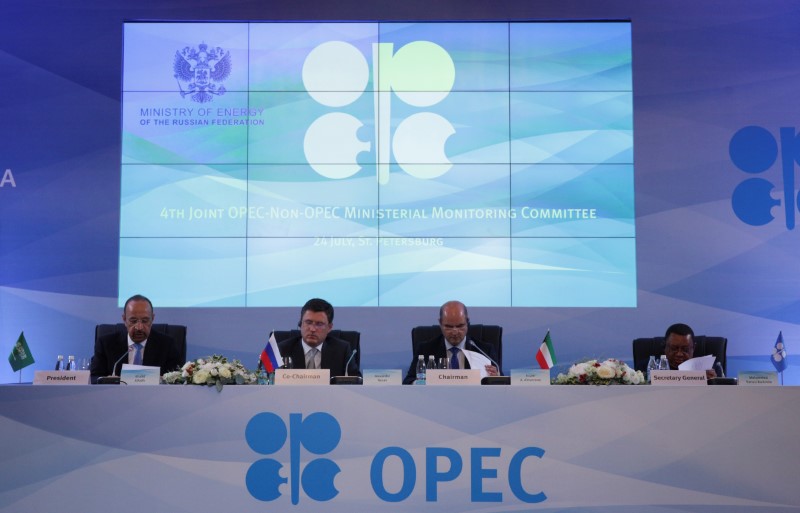By Apeksha Nair and Karen Rodrigues
(Reuters) - Oil analysts have cut their 2017 crude price forecasts for a sixth straight month in July, citing concerns over compliance with an OPEC-led deal to limit production that could dampen the market's attempt to rebalance.
The Organization of the Petroleum Exporting Countries and partners including Russia have agreed to reduce output by about 1.8 million barrels per day (bpd) until March 2018.
"OPEC's compliance is expected to remain under pressure over the coming months as scepticism grows over the pace of market rebalancing, despite actions taken by the cartel and some non-OPEC countries," said Abhishek Kumar, senior energy analyst at Interfax Energy's Global Gas Analytics in London.
Adherence to the deal was high in the first half of the year, but the International Energy Agency's latest report showed compliance fell to 78 percent in June from 95 percent in May, as several members pumped much more oil than agreed upon.
Saudi Arabia, Angola and Kuwait have shouldered the largest cuts. [OPEC/O]
OPEC member Ecuador has opted out of the deal and said it plans to gradually raise output. Analysts agree the impact on overall supply is likely to be small, but the move could hurt market sentiment.
"The longer prices remain low, the greater the risk is that some OPEC countries will no longer comply with the production cuts as strictly as they have been doing so far," Commerzbank (DE:CBKG) analyst Carsten Fritsch said.
Following Ecuador's announcement, Saudi Arabia pledged to cut exports in August, when domestic Saudi energy consumption is close to its highest.
"OPEC was swift to reaffirm its commitment in the production deal after Ecuador's announcement. The group vowed to tackle low compliance among its members, although it remains unclear how. Saudi Arabia continues to lift most of the weight of the cuts," said Giorgos Beleris, analyst at Thomson Reuters Oil Research and Forecasts.
The survey of 33 analysts and economists showed Brent crude (LCOc1) would average $52.45 per barrel in 2017, below the $53.96 per barrel forecast in June.
Brent has averaged about $52.12 in 2017.
The poll forecast U.S. light crude (CLc1) would average $50.08 a barrel in 2017, down from $51.92 in June's forecast.
Analysts also lowered their price outlook for 2018.
Brent is now seen averaging $54.51 per barrel, down from $57.37 in the June poll. WTI is seen at $51.88, down from $55.20 in June.
While oil demand is seen picking up in the second half of 2017 thanks to stronger global economic growth, the supply picture still remains unclear, despite a recent drawdown in U.S. inventories.
Geopolitical risks in the Middle East, instability in Libya and an escalating crisis in Venezuela including possible sanctions from the United States are some of the factors that could impact the market this year, analysts said.
"The simple truth is that OPEC and Russia have to contend with the fact that there is output growth elsewhere diluting their efforts at reducing supply. Nigeria, Libya and U.S. shale oil feature prominently as an offset to OPEC's efforts," BNP Paribas (PA:BNPP) analyst Harry Tchilinguirian said.

A few analysts expect the market to show a narrow deficit by the end of the year if OPEC sticks to its supply deal and U.S. shale producers moderate their pace of drilling. Others believe the rebalancing could be pushed into next year.